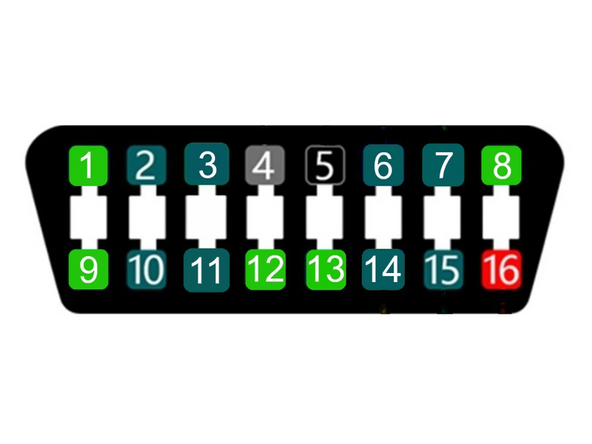Introduction
More and more vehicles are now using Ethernet networks, also known as DoIP (“Diagnostics over Internet Protocol”), which allow vehicle systems to transmit data at much faster speeds compared to CAN networks. As of 2023, certain vehicle diagnostics are primarily available via DoIP rather than traditional CAN networks.
The 16-pin T-harness HRN-BM16T22 has the 2-pin Molex connector for Ethernet (pins 3 and 11) connected by default. This must be disconnected for any vehicles that require an Ethernet bypass to ensure that scanning tools and other equipment are not affected.
Vehicles that require an Ethernet bypass are listed in this table:
| OEM or Vehicle Make | Vehicle Model and Year |
| Alpine | A290 (2025 and newer) A390 (2025 and newer) |
| Audi | Audi Q4 eTron (2022 and newer) Audi Q5 eTron (2022 and newer) All models (2025 and newer) |
| BMW | All models |
| CUPRA / SEAT | Born (2022 and newer) SEAT / CUPRA Tavascan (2024 and newer) All models (2025 and newer) |
| Ford | Capri (BEV) (2025 and newer) Explorer (BEV) (2024 and newer) |
| Goupil | G4 (2016 and newer) G5 (2020 and newer) G6 (2020 and newer) |
| Hyundai | Kona (2022 and newer) |
| Iveco | Eurocargo III (2023 and newer) |
| Jaguar | E-Pace (2022 and newer) F-Pace (2022 and newer) F-Type (2022 to 2024) |
| Land Rover | All models (2023 and newer) |
| MAN | TGM (2020 and newer) TGS (2020 and newer) TGX (2020 and newer) |
| Mercedes-Benz | EQA EQC EQE EQS EQV e-Sprinter e-Vito |
| Nissan | Ariya (2023 and newer) Interstar (2025 and newer) Leaf (2025 and newer) Micra EV (2025 and newer) Primastar (2025 and newer) |
| Porsche | All models (2025 and newer) |
| Range Rover | All models (2023 and newer) |
| Renault Cars & Vans | All electric models (2024 and newer) |
| Renault Trucks | All models (2025 and newer) |
| Scania Trucks & Busses | All models (2024 and newer) |
| Skoda | Elroq (2024 and newer Enyaq iV (2022 and newer) Enyaq Coupé (2023 and newer) All models (2025 and newer) |
| Volvo Buses (Europe) | All models |
| Volvo Trucks (Europe) | All models (2016 and newer) |
| Volvo Trucks (North America) | VNL (BEV) (2024 and newer) VNR (BEV) (2024 and newer) |
| VW Audi Group (VAG) Vehicles | VW ID Buzz (2023 and newer) VW ID.3 (2022 and newer) VW ID.4 (2022 and newer) VW ID.5 (2022 and newer) VW ID.6 (2022 and newer) VW ID.7 (2023 and newer) All models (2025 and newer) |
-
-
Vehicles equipped with Ethernet/DOIP (Diagnostics over Internet Protocol) have one of the following two OBD-II port layouts:
-
-
-
Pin 8 - DOIP Activator
-
Pin 3 - RX +
-
Pin 11 - RX -
-
Pin 12 - TX +
-
Pin 13 - TX -
-
-
-
Pin 8 - DOIP Activator
-
Pin 1 - RX +
-
Pin 9 - RX -
-
Pin 12 - TX +
-
Pin 13 - TX -
-
-
-
WARNING! All in-vehicle devices and related cabling must be securely fastened and kept clear of all vehicle controls, including gas, brake and clutch pedals. To ensure all devices and cabling remain securely attached, inspect devices and cabling on a regular basis.
-
Loose cabling or devices may impede the use of vehicle controls, resulting in unanticipated acceleration, braking, or other loss of vehicle control, which could lead to death or serious personal injury. Upon sudden acceleration or deceleration, improperly fastened, in-vehicle devices may detach and impact operators, which may cause injury.
-





